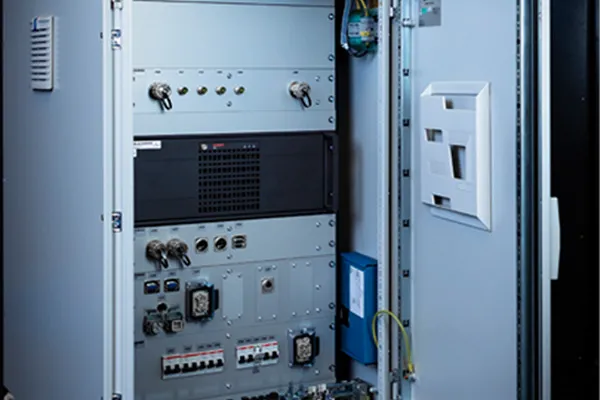The Blackbird Technology Package
The comprehensive Blackbird technology package with the sales and service network of ABICOR BINZEL means an economic benefit: the highest process reliability, precise welds, and reproducible seam properties in automated production can be realized through an international network anywhere in the world.
Sophisticated control technologies, precisely coordinated optics, and highly dynamic scanner systems form the basis for future-oriented laser welding in modern automotive production.

Beyond the Scanner - At a Glance...
Scan Control Unit (SCU-3)
The SCU-3 is a control unit for scanning optics used in remote laser applications. The system can be used for stationary fixed scanners and dynamically moves by an industrial robot. In dynamic systems, the robot and scanner movements can be synchronized by the SCU-3 resulting in a full 9-axis coordinated motion. The system consists of a control cabinet, user software, and an optional control panel.
Additionally, the SCU is integrated into the controller communication system as a slave. Control of the system, such as program selection, program start, etc. is performed via a higher-level master controller, typically the robot controller or the cell controller. Numerous bus systems are available for flexible integration.
An interface to the laser source is also implemented to allow the SCU direct control of the laser power to insure precise coordination with the scanner and/or robot movement.

Robot Synch Unit (RSU)
The user software is used for programming, controlling, and monitoring of the welding process. Effective programming of the welding job is ensured through an intuitive user interface. The user can process the workpiece with the robot program both on the basis of CAD files (STEP / IGES) and through an intuitive conventional teach-in process.
In addition to the processing geometry, various parameters can be controlled along the scanning process path in 3D, allowing highly accurate control of parameters including the laser power, travel speed, defocus, and oscillation during operation. On-the-fly processing can be used to optimize positioning coordination between the scanner and robot, minimizing cycle time. Thus the SCU ensures the optimal interaction of the scanner, laser, and robot, enabling a dramatic reduction of the cycle times over conventional processing methods.
ScaVis Camera system
Fast shape recognition and image processing by adjusting the seam position and welding parameters to the workpiece is a crucial step toward ensuring a high-quality process. The ScaVis camera system helps to maintain quality by welding at the correct position and prevents faulty welds on costly workpieces. Used with static applications to detect part locations, calculate relative positions (in case of multiple parts) and choose the suitable welding parameter set as the situation requires. This process is supported by highly adaptable software due to its modular structuring and constant optimization. For better visibility, a distinct illumination of the working field with 850nm wavelength helps emphasize the characteristics and features of the part
On-the-fly Option
If a large number of short seams have to be welded at various positions, the cycle time can be significantly reduced through optimum synchronization between the robot path and the scanner movement. While the robot moves the scanner optics along the workpiece at a constant distance and continuous speed, the laser beam is quickly and precisely directed to the processing point from a linear path by the mirror systems. When comparing this on-the-fly technique with welding with fixed optics without scanner mirrors, the slow approach and stop over the welding spot is eliminated. In this way, unproductive downtime can be massively reduced.
The powerful SCU3 (ScanControlUnit) ensures that the Blackbird on-the-fly synchronization of robot and scan movements, which has been tried and tested for years, optimally uses the laser beam as an energy source and thus enables short cycle times. The offline programming option supports the programming process on the component by enabling path and cycle time optimization to be carried out on the PC.
Optical Coherence tomography (OCT)
In optical coherence tomography (OCT), the component surface is scanned at a high frequency by an optical measuring beam. By comparing it with a reference beam of defined length, the distance is measured locally and precisely and a height profile is created, which enables the reliable detection of joints and component edges. In addition, OCT can be used to detect surface irregularities on weld seams and to determine the depth of the keyhole during deep welding. The latter allows conclusions about the seam depth already during the process. The combination of impact position detection with a downstream inline inspection of the seam topology makes OCT a powerful tool for automated production, for example in door manufacturing.
Learn more about laser applications in Body Construction and E-Mobility
